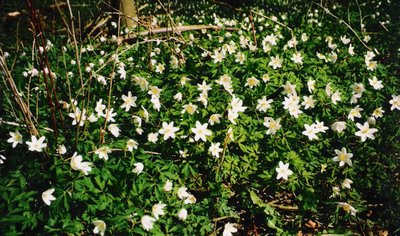
It was necessary in the 1700s to have wasp waist of a very alarmed small diameter, but the ladies endured patiently the torments of the corset like their kindred spirits had done for centuries. A physician published a book in 1767 where he warned against the tight stays with drastic expressions which make you wonder that mankind has survived this fatal fashion.
He meets women everywhere, he's especially alarmed by young beauties walking along the streets snorting and panting, they can only take a few steps, before they have to take a pause in order to catch their breath. He wonders how the air is able to reach the lungs at all, and how the blood is able to run. The women are fainting all the time and have to sniff some strong perfume to wake up. How can women endure it he says. They have headache, tooth and ear-ache, colics and stiches in their side, the stomach is disturbed, the intestines press upon nerves, and they have indigestion and cramps and break winds; they suffer from vomitting and haemorrhage, and he's also alarmed when he thinks about the pregnant women blaims them for abortions and warn them that they might give birth to a stillborn baby and die themselves. When a woman read that book she would probably be terrified, but she had to put the book away and follow the fashion like we do today, hadn't she?

The stays are an old form of corset which were used from about 1500 to after 1860. A tight-lacing corset is a common form used today.
The leather corset in ab. 1550 was the first where they made a cheap version of the iron corsets, corsets were made from linen, leather, wood and iron sticks which were gathered in a lace, since buttons were expensive at that time. It was a great progress, when they got fishbones (whalebone) as ribs instead of iron and wood ribs. Later the whalebones were replaced by spring steel.
With Rococo and Neo Classicism (ca. 1730 - 1800) came a style, which was modelled after the breast of the goddess Venus, who was the woman ideal in the Greek Antique and in Neo Classicism after the French revolution. This made the stays out of fashion for a short period, where women wore thin Greek flowing robes, even in the Nordic winter cold.
The later Victorian corset pressed all ribs of the body up. If it was tightened in front it pressed all the ribs down. The taille was down on the hips, so the upper part of the body was a narrow cone placed upon a ball.
The "cone-ball-stays" (from ab. 1840 - 1870), the Neo Rococo demanded crinoline in order to keep out the skirts, and the still larger crinolines demanded a larger , stiffer and tighter belt.
So the stays emerged again and developed gradually a new low stay, which remined about two half balls with a broad stalk in between. From this came a new stay formed as a broad cone placed upon a ball. This type pressed the ribs up and opened the lungs, and it meant that women could dance longer than before. Thus it was possible to create the modern ballet. The large tyl full skirts used in ballet is an inheritance from the Neo Rococo. A form of cone-ball stay is still made in 2004, the lacing is so that the intestine and the liver are just lifted without being pressed. Finito!
Source: Archaeological Magazine Skalk, nr. 1., 1968; Wikipedia: Snøreliv, Dansk.
Details from illustrations by Des Asmussen.








































